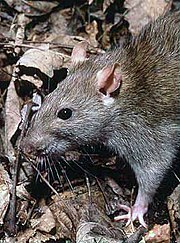
Several non-human species demonstrate vocalizations that sound similar to human laughter. A significant proportion of these species are mammals, which suggests that the neurological functions occurred early in the process of mammalian evolution
Rats emit long, 50-kHz ultrasonic calls that are induced during rough and tumble play, and when tickled by humans. The vocalization is described as distinct "chirping". Like humans, rats have "tickle skin", areas of the body that generate greater laughter responses than others. Rats that laugh the most also play the most and prefer to spend more time with other laughing rats
Dogs[edit]
Dogs sometimes pant in a manner that sounds like a human laugh. By analyzing the pant using a sonograph, this pant varies with bursts of frequencies. When this vocalization is played to dogs in a shelter setting, it can initiate play, promote pro-social behavior, and decrease stress levels. One study compared the behaviour of 120 dogs with and without exposure to a recorded "dog-laugh". Playback reduced stress-related behaviors, increased tail wagging, the display of a "play-face" when playing was initiated, and pro-social behavior such as approaching and lip licking.[11]
Dolphins[edit]
In 2004, researchers who were studying dolphins in Sweden noticed a particular set of sounds that they hadn't heard before.[12] These sounds consisted of a short burst of pulses, followed by a whistle. After further observations the researchers discovered that these signals were only being made by dolphins during play-fighting, and never during aggressive confrontations. Their conclusion was that these sounds were being made by the dolphins to indicate that the situation was pleasant and/or non-threatening, and to help prevent it escalating into something like a real fight. This, according to psychologists, is the reason why laughter exists in the first place, suggesting these noises were the dolphin equivalent of a human laugh.[13]

No comments:
Post a Comment